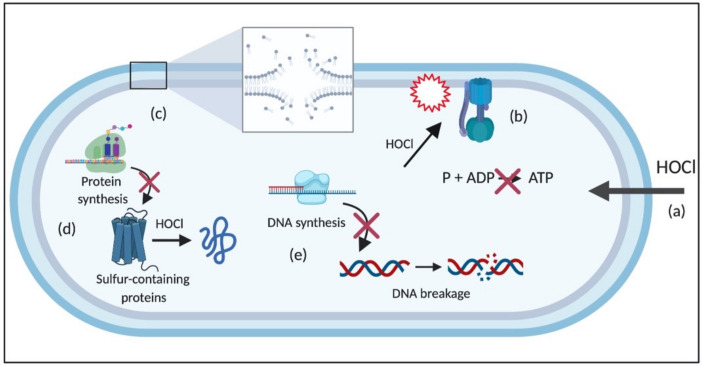Figure 2.
Schematic of HOCl targets in Gram-negative bacterial cells. (a) HOCl easily penetrates the bacterial cell due to its neutrality and attacks (b) several membrane components and processes, including transporters and proteins, such as ATPase, which disrupts ATP production (c) lipids, causing, for example, loss of membrane stability, (d) protein synthesis and proteins, especially the sulfur-containing ones, and (e) DNA, leading to DNA breakage and impairment of DNA synthesis. HOCl: hypochlorous acid; P: phosphate; ADP: adenosine diphosphate; ATP: adenosine triphosphate.

